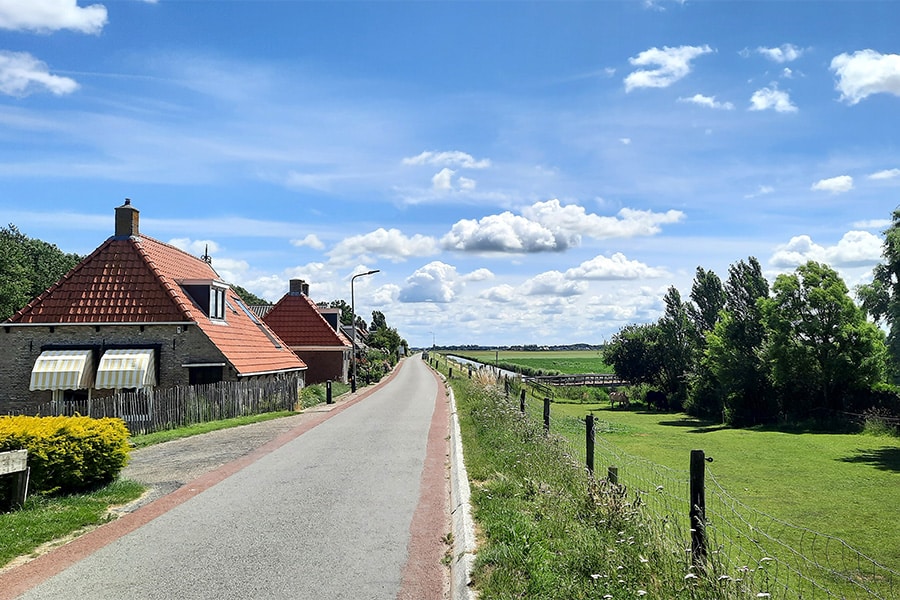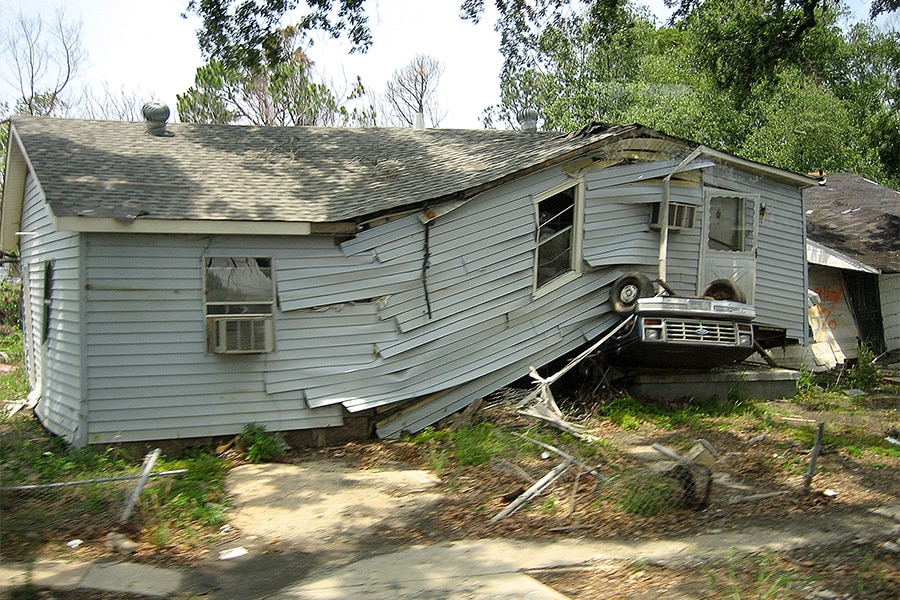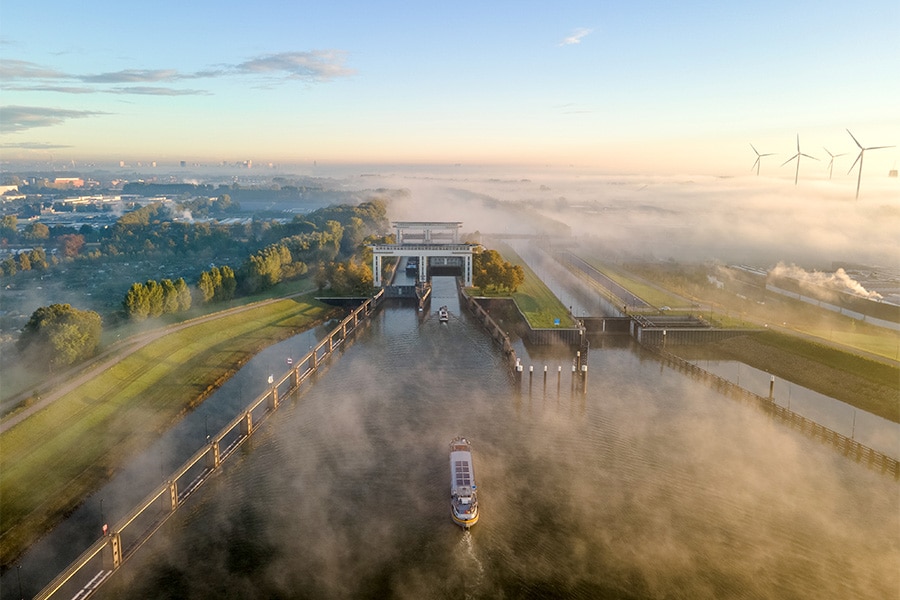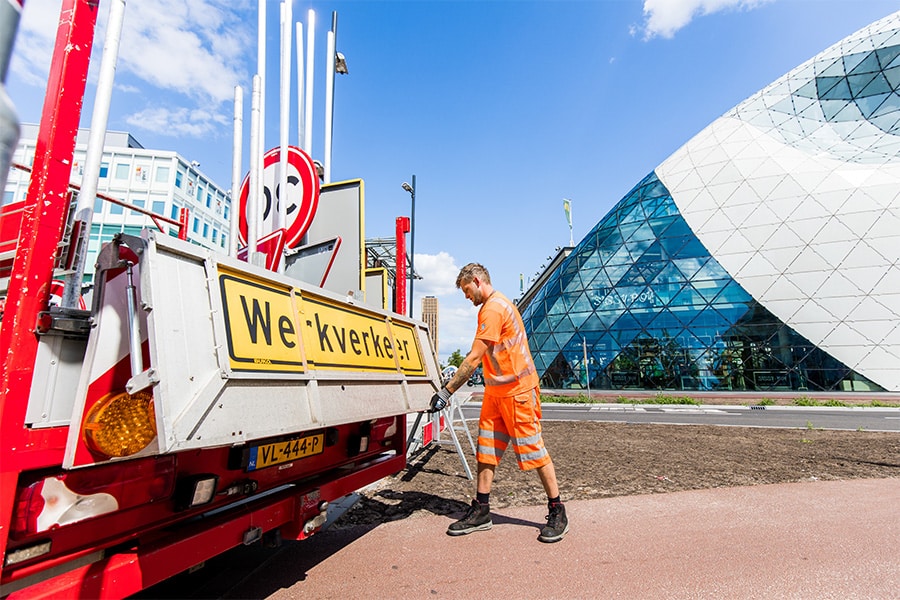
How do we keep the Netherlands water safe?
The Netherlands was ravaged by high water on the rivers, lakes and along the coast in the last months of 2023 and the first weeks of 2024. Even the Maeslantkering closed automatically for the first time since its opening in 1997. Despite this, our dikes held up well. According to Meindert Van, dike technology expert at Deltares, the result of almost a thousand years of knowledge and experience and above all: continuous improvement. He updates us on the latest developments and future challenges. After all, is there such a thing as a dike of the future?
Deltares is an independent knowledge institute for applied research in the field of water and subsoil. "We are a non-profit foundation and created to keep the knowledge base for water and subsoil in order. Water safety is one aspect of that," says Meindert. "With regard to dikes, we do research across the board for parties such as the Department of Public Works, water boards and the Flood Protection Program. We also regularly go on missions abroad to gather and share knowledge, such as after the severe flooding in New Orleans in 2005. I myself have also been to China, Colombia and Bhutan, for example, to tackle dike problems."

Concurrence
The recent period of high water makes Meindert happy. "What you see in the Netherlands is that we have it pretty well organized here. The primary flood defenses have held up excellently in terms of strength. Nothing crazy happened. And it was still quite intense, partly caused by a confluence of circumstances. We had to deal with a high water level at sea, because the Maeslantkering only closes at a water level of 3 meters above sea level, combined with strong wind and stormy situations and the fact that a lot of precipitation fell during those months. This also caused the water levels in the rivers to rise, as well as the levels in the IJsselmeer and the Markermeer. During storms, the water is pushed in one direction and the lake 'tilts' as it were, with the waves pounding against the dikes. Despite these stresses, the dikes have held up well everywhere. They are designed for higher water levels and even harder winds."
Water safety regulated by law
For the primary flood defenses in our country, the requirements for safety are laid down by law. Meindert: "The water safety of the secondary system, on the other hand, is not regulated by law. It is much more a system of polders, and pumping stations. Flooding of a secondary system is much less serious than that of a primary flood defense system. There is then only local flooding, with no large numbers of casualties or massive disruption of the economy. Doesn't take away from the fact that it can certainly be annoying for the citizens involved, but it doesn't affect overall water safety."

Century-old system
The fact that during high water, the "damage" in the Netherlands is always not that bad compared to the damage in our neighboring countries, according to Meindert, is because we have much higher safety requirements for our dikes. "The system is centuries old. A thousand years ago, the first water boards were established here. All that time, the system has been maintained, raised and improved. Weak links are found and eliminated. It's a continuous process. Internationally, we really have it right here. We have to, because things can go very wrong. People abroad always look at how we organize and finance water safety in the Netherlands. Politically, there is little discussion. Water safety is in our genes."
Broad scope
In spatial choices, legislation and politics are increasingly guiding water and soil, according to Meindert. "How do we organize the Netherlands in the future in such a way that water and soil have a good place? In water safety research, the focus is not only on the dike as a line along the river, but on the entire area around the rivers. The foreland, the floodplain, adjacent housing and business parks must also be intelligently designed so that they contribute to water safety. In short, a multifunctional use of space. A good example is the windmills on the verge of the dike along the Ems-Dollard. This is where the aspects of flood protection and energy transition come together." ′
Innovation Accelerator
From the Flood Protection Program, it is estimated that over 2,000 kilometers of levees will be reinforced until 2050. "From the Innovation Accelerator we are constantly researching how this operation can be carried out faster, cheaper and with less impact on the surroundings and the environment. This results in new techniques, such as the use of sheet pile walls in the dike, but also solutions with less or no impact on CO2 emissions. In that context, we are also researching the impact of low-temperature asphalt. Because of climate goals, the current Hot Mix asphalt in road construction is slowly being phased out. But what does that mean for asphalt on levees? Can we use the low-temperature asphalt as a hydraulic construction asphalt and how does it behave in waves and extreme conditions? These are the kinds of developments we are busy with."

Biodiversity Agenda
The biodiversity agenda also has implications for levees. In different ways. "Positive in any case is that different grass mixtures are being looked at more and more closely," Meindert believes. "That makes for more flowers and more critters on the dike. A flowering dike is not only beautiful, but also improves biodiversity." Speaking of critters, a growing water safety concern is the expanding beaver population. "Over the past decade, we've gained quite a bit of knowledge about how they behave and what it means for water safety. Beavers dig burrows of just 10 meters or more a day. And just when you don't want them in the dike, they go after it. It's logical behavior. They live in the floodplain, but at high tide they head for the dike. They start a burrow just below the high tide line and dig until it dries. It's pretty invisible what they're doing. How do you control that and how does it affect water safety? At some point it becomes a political issue. How far do we want to go? No doubt that will be on the water safety agenda in the coming years."
Accelerating climate change
Another agenda item is accelerated climate change. "A thousand years ago the North Sea was about 2 meters lower and 10,000 years ago as much as 50 meters lower," Meindert knows. "We are still experiencing a sea level rise due to the ice age of about 20 centimeters per century. On the other hand, we are experiencing a land subsidence of 20 to 30 centimeters per century because we are draining the polders. That means we have to turn over an extra 50 centimeters every century anyway. On top of that comes the scenario of accelerated climate change. KNMI has just drawn up new scenarios. Based on these predictions, we can make statements about the expected water levels in 50 years or even 200 years from now. We take that kind of scenario into account in the research we do into future dikes and defenses. Until what point, for example, will the Maeslantkering continue to function? Or what do those scenarios mean for the current coastline? Beach dynamics are now maintained by sand replenishment. Can we sustain that if sea levels accelerate and what are the costs?"
Continuous process
Deltares ensures that all knowledge and information in the field of water safety, among others, is brought together so that balanced decisions can be made on the basis of the right information. And this knowledge is not only obtained from its own research. "We see that more and more countries are suffering from flooding and are developing knowledge as a result," notes Meindert. "America was really behind in terms of knowledge level at the time of New Orleans, but by now that gap has caught up. The same goes for France and the United Kingdom. Internationally, knowledge about dikes has improved considerably compared to, say, twenty years ago. At that time the Netherlands was the reference, but other countries are also accumulating more and more knowledge and we too are benefiting from that." When asked what the dike of the future will look like, Meindert says, "There is no simple answer to that. We are now working toward 2050, but that is not the end point. It is a continuous process of upgrading and adapting, taking into account climate scenarios, the soil that is subsiding and the sea level that is rising. We have been doing that for the past thousand years and will continue to do so for the next thousand."




